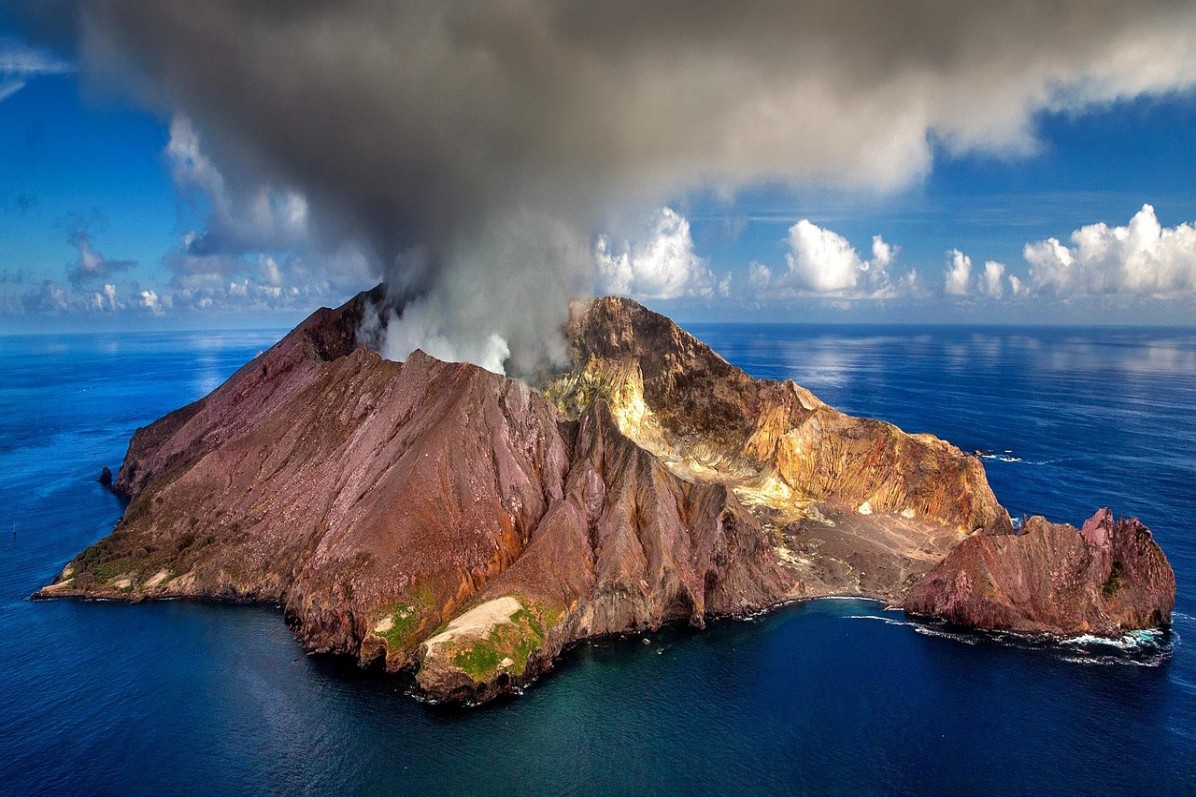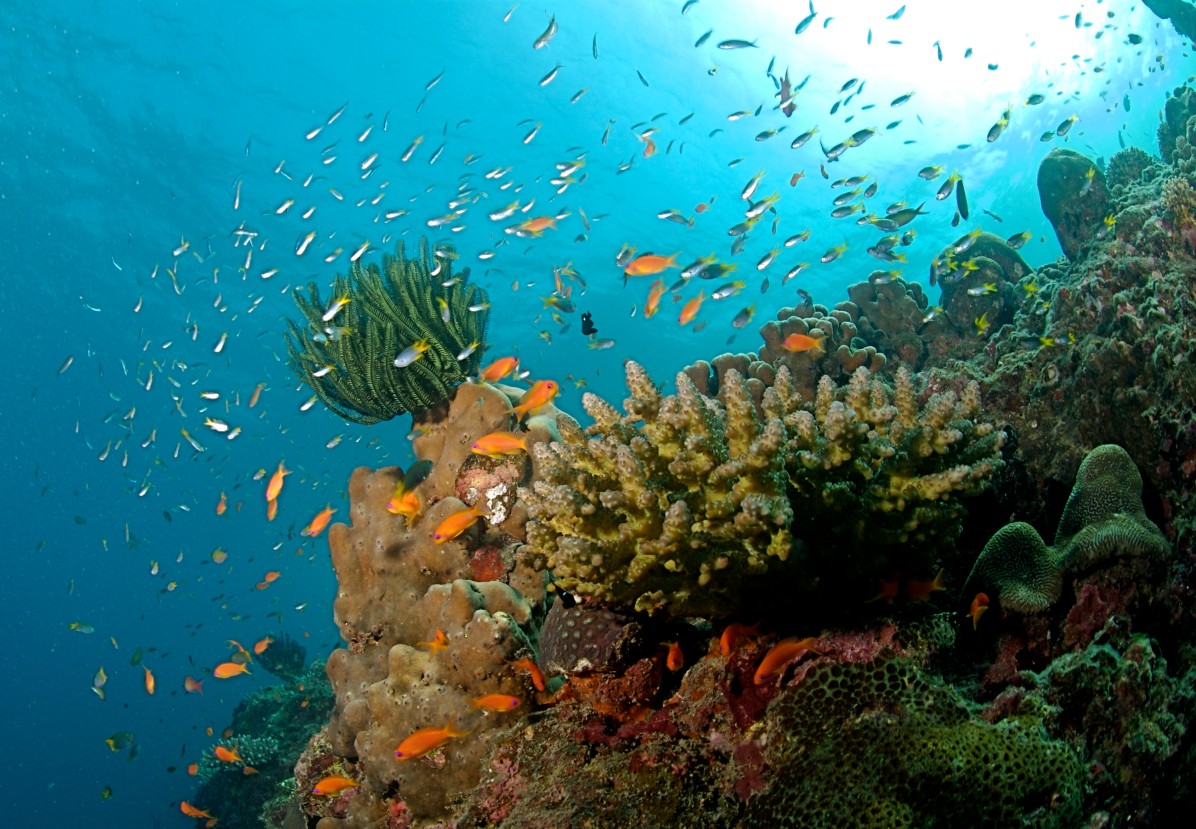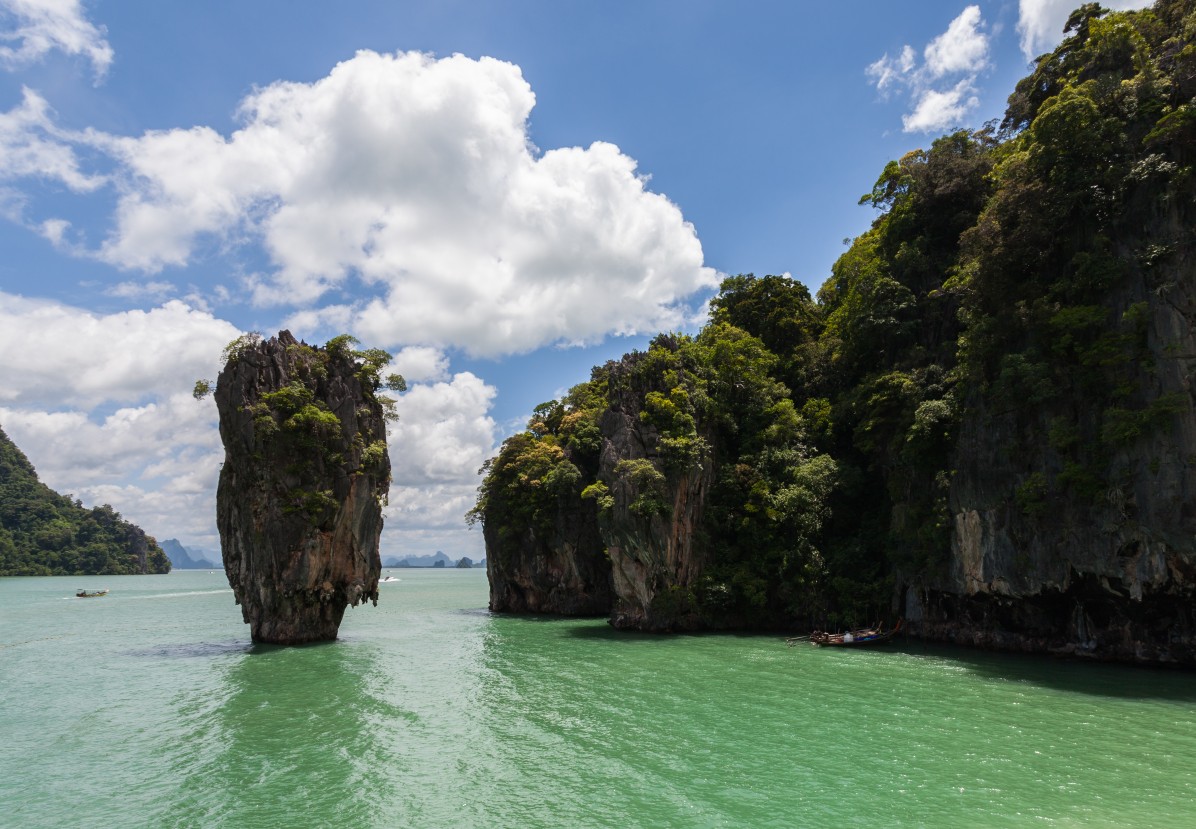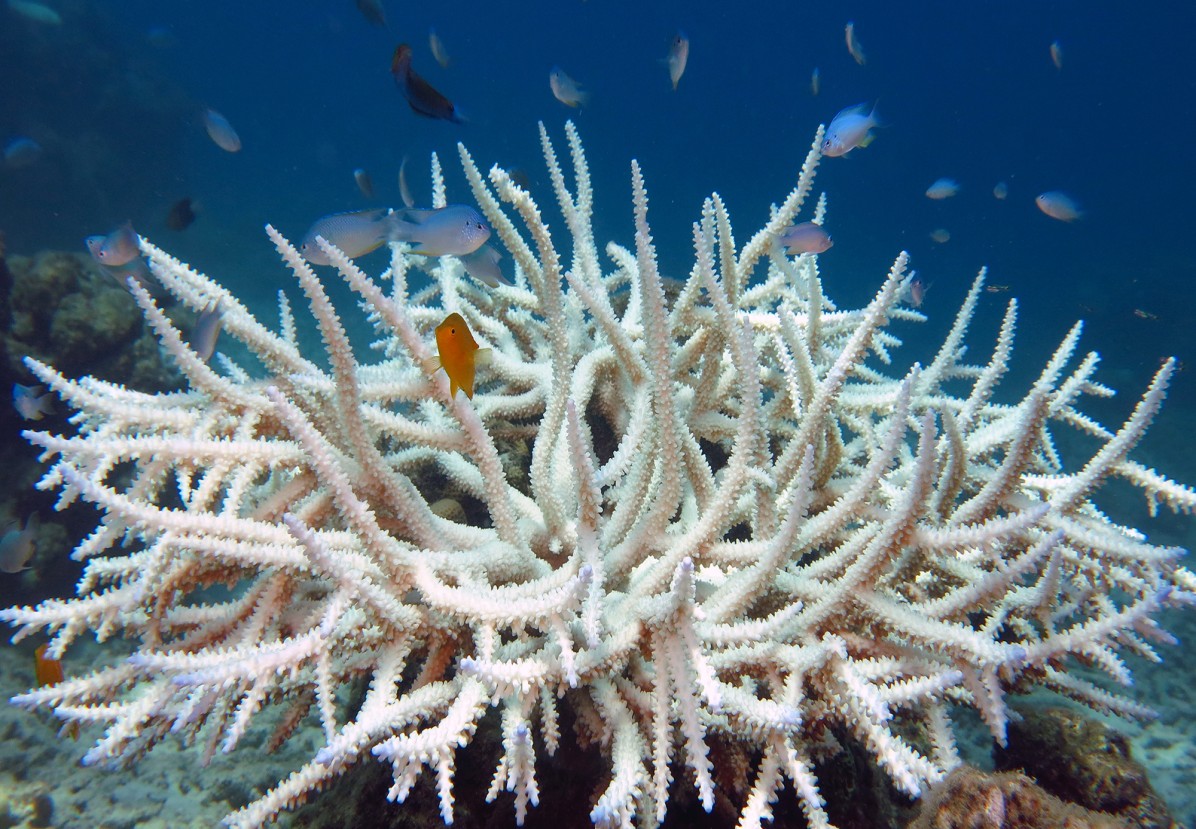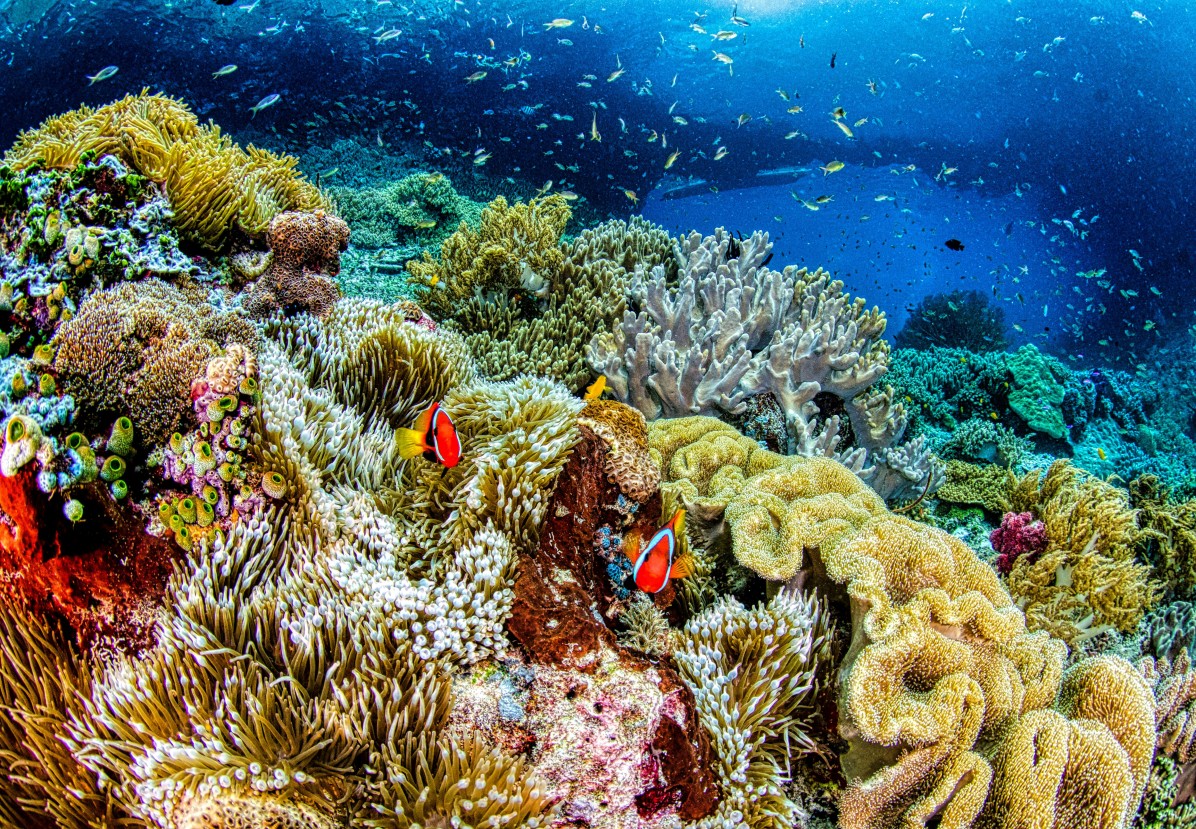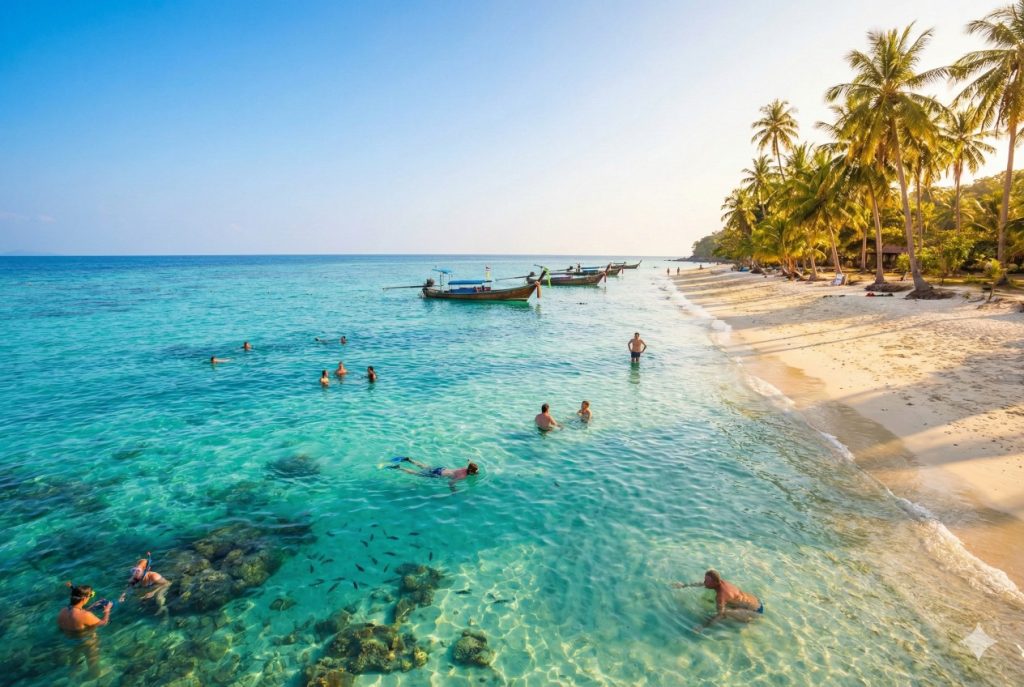Geological Background of Andaman & Nicobar
The formation of these islands started almost 88 million years ago. Large-scale tectonic plate generation led to the Indian Ocean’s formation. The Andaman and Nicobar Islands resulted from volcanic activity and the subduction zone of the Indian Plate and the Burmese Plate.
This is the reason that most of the archipelago is rocky instead of built from coral. However, these volcanic origins created perfect conditions for corals to develop over the millennia allowing the rich coral reefs that are now seen in the Andaman Nicobar.
If you’re fascinated by the ancient past, check out our blog How Were Andaman and Nicobar Islands Formed? to dive deeper into the geological processes that shaped these islands.
Are They Really Coral Islands?
Are the Andaman Islands coral islands? The answer is: not entirely. The Lakshadweep Islands are coral atolls made entirely of reef growth, while the Andaman Islands are volcanic islands with fringing coral reefs surrounding them. There are some smaller islands, specifically those around North Bay, Neil, and Havelock, that people often refer to as Andaman coral islands, as their beaches and lagoons have been heavily shaped by corals. However, strictly speaking, not every Andaman island was made from coral.
This unique combination of volcanic core and coral periphery is part of what makes the archipelago so unique. Visitors get to experience dramatic cliffs and dense forests inland and clear waters with beautiful coral gardens off the coast.
Coral Diversity and Marine Life
The coral diversity in the Andaman region is one of India’s richest. We have documented over 200 species of hard and soft corals, from large brain corals to small branching staghorns.
These reefs provide habitat for:
- Colorful reef fishes such as parrotfish, clownfish, and butterflyfish;
- Sea turtles that feed on sea grass near coral lagoons;
- Mollusks, rays, and reef sharks that inhabit the deeper reef edges.
The coral ecosystems at Andaman Nicobar have so much life that divers often refer to them as “underwater cities,” full of life and color.
For a more immersive look at marine biodiversity, explore our blog Andaman and Nicobar Islands: Diving into Underwater Wonders.
Best Coral Islands in Andaman
If you’re dreaming of snorkeling or diving into coral-rich waters, here are the best coral islands in Andaman worth visiting:
- North Bay Island – Known for glass-bottom boat rides, snorkeling, and close-to-shore coral reefs.
- Havelock Island (Swaraj Dweep) – Home to Elephant Beach, one of the best spots for vibrant coral snorkneling.
- Neil Island (Shaheed Dweep) – Famous for shallow reefs teeming with colorful fish.
- Cinque Islands – Often called “the twin islands,” offering untouched coral beauty.
- Red Skin Island – Part of Mahatma Gandhi Marine National Park, ideal for beginners to see corals up close.
Each of these Andaman coral islands offers a different shade of underwater beauty, making them perfect for eco-travelers and adventure seekers alike.
Activities: Snorkeling, Diving & Glass-Bottom Rides
Experiencing coral reefs is not limited to professional divers. The islands offer something for everyone:
- Snorkeling coral Andaman: Popular at Elephant Beach and North Bay Island, suitable even for beginners.
- Scuba diving: Havelock, Neil, and Cinque Islands offer world-class dive schools with certified instructors.
- Glass-bottom boat rides: Perfect for non-swimmers who still want to marvel at reefs without getting wet.
These activities not only allow travelers to explore coral reefs in Andaman Nicobar but also provide sustainable ways to enjoy marine life when done with eco-certified operators.
Importance of Coral Ecosystems
What is the importance of these reefs? The coral ecology in Andaman is critical to:
- Protecting shorelines from erosion by buffering waves
- Acting as nurseries for marine life and fish
- Supporting local livelihoods through fishing and tourism
- Contributing to global biodiversity hotspots
The ecological balance of the islands would collapse without coral reefs, so we need to work to conserve coral reefs in Andaman.
Threats to Coral Reefs in Andaman
Sadly, the reefs face challenges from multiple sources:
- Climate change & bleaching: Coral bleaching events have increased over the last number of years because sea temperatures are warming.
- Pollution: The health of the reef is affected by the presence of plastic and sewage.
- Tourism pressure: Irresponsible and poor tourist behavior such as snorkelers kicking up sand, boats anchoring in a bad manner, and touching coral are impacting fragile reefs.
- Coastal development: the building of resorts and construction near beach fronts is damaging ecosystems.
All of these aspects can directly or indirectly threaten coral reefs in Andaman, so it is imperative travelers and sport fishing and all authorities act in a responsible manner.
Conservation Efforts in Andaman Coral Islands
There are ongoing initiatives to safeguard the Andaman coral islands:
- marine protected areas like Mahatma Gandhi Marine National Park and Rani Jhansi Marine National Park.
- Project aimed at transplanting coral and restoration of damaged reef areas.
- Government regulation which limits tourism to sensitive areas.
- NGOs working to promote awareness of what constitutes sustainable tourism.
Choosing eco-responsible activities while on your trip or visit, will help support initiatives that conserve the coral reefs in Andaman.
Eco-Friendly Travel Tips for Visitors
If you want to explore these reefs responsibly, keep these tips in mind:
- Never touch or step on corals—they are fragile living organisms.
- Use reef-safe sunscreen to avoid chemical damage.
- Avoid littering, especially plastics, on beaches and boats.
- Support certified eco-operators for snorkeling and diving.
- Respect rules at marine parks and sanctuaries.
Every small action helps reduce threats to coral reefs in Andaman, ensuring they survive for future generations.
FAQs
Q. Are Andaman and Nicobar Islands coral islands?
Not entirely. They are volcanic in origin, but several small ones are Andaman coral islands with fringing reefs.
Q. What are the best coral islands in Andaman?
Havelock, Neil, North Bay, Red Skin, and Cinque Islands are the best coral islands in Andaman.
Q. How diverse are the corals in Andaman?
The coral diversity in Andaman includes 200+ species of hard and soft corals.
Q. Can I go snorkeling in Andaman?
Yes, snorkeling coral Andaman tours are popular at Elephant Beach, North Bay, and Neil Island.
Q. What threats face the reefs?
Climate change, bleaching, pollution, and tourism pressure are major threats to coral reefs in Andaman.
Q. Is coral conservation happening in Andaman?
Yes, protected parks and transplantation programs support the conservation of coral reefs in Andaman.
Q. What marine life can I see around the reefs?
The Andaman Nicobar marine life coral includes tropical fish, rays, turtles, and reef sharks.
Q. Are all Andaman Islands coral-based?
No. Most are volcanic, but certain islands are coral-rich with vibrant reef ecosystems.
Q. Which activities let me see corals?
Snorkeling, scuba diving, and glass-bottom rides are the best ways to explore coral reefs in Andaman Nicobar.
Q. Best time to visit coral islands?
October to May offers calm seas and clear visibility for coral activities.
Q. Are Andaman corals better than Lakshadweep?
Different experiences—Andaman coral islands are volcanic with fringing reefs, while Lakshadweep is purely coral atolls.
Q. Can beginners enjoy corals in Andaman?
Absolutely. Even non-swimmers can enjoy reefs through glass-bottom rides in Andaman coral islands.
Final Thoughts
So, are Andaman and Nicobar indeed coral islands? The answer is beautifully complicated. Although their volcanic origins differentiate them, fringing reefs convert many into Andaman coral islands. With their breathtaking coral diversity in Andaman, colorful Andaman Nicobar marine life coral and exhilarating activities, such as snorkeling coral Andaman, the Andaman and Nicobar are a visual feast of nature.
However, beauty is a responsibility. You can only guarantee that future generations will be able to experience the wonders of the underwater world, by prioritizing conservation of coral reefs in Andaman.
If you are prepared to explore the underwater coral islands, let us at The Tarzan Way design your experience. From eco-tours at North Bay to diving at Havelock, we design custom itineraries for you to enjoy the beauty of the Andaman coral islands responsibility.


